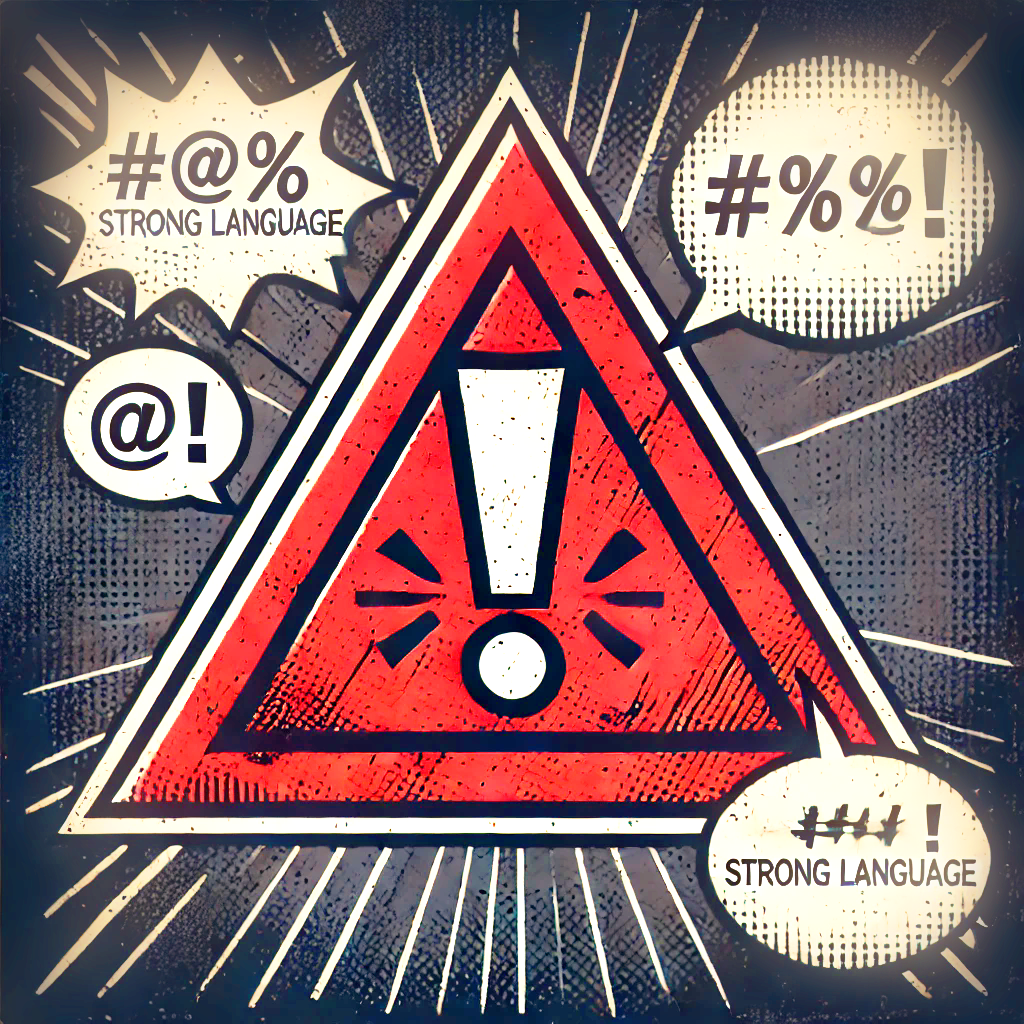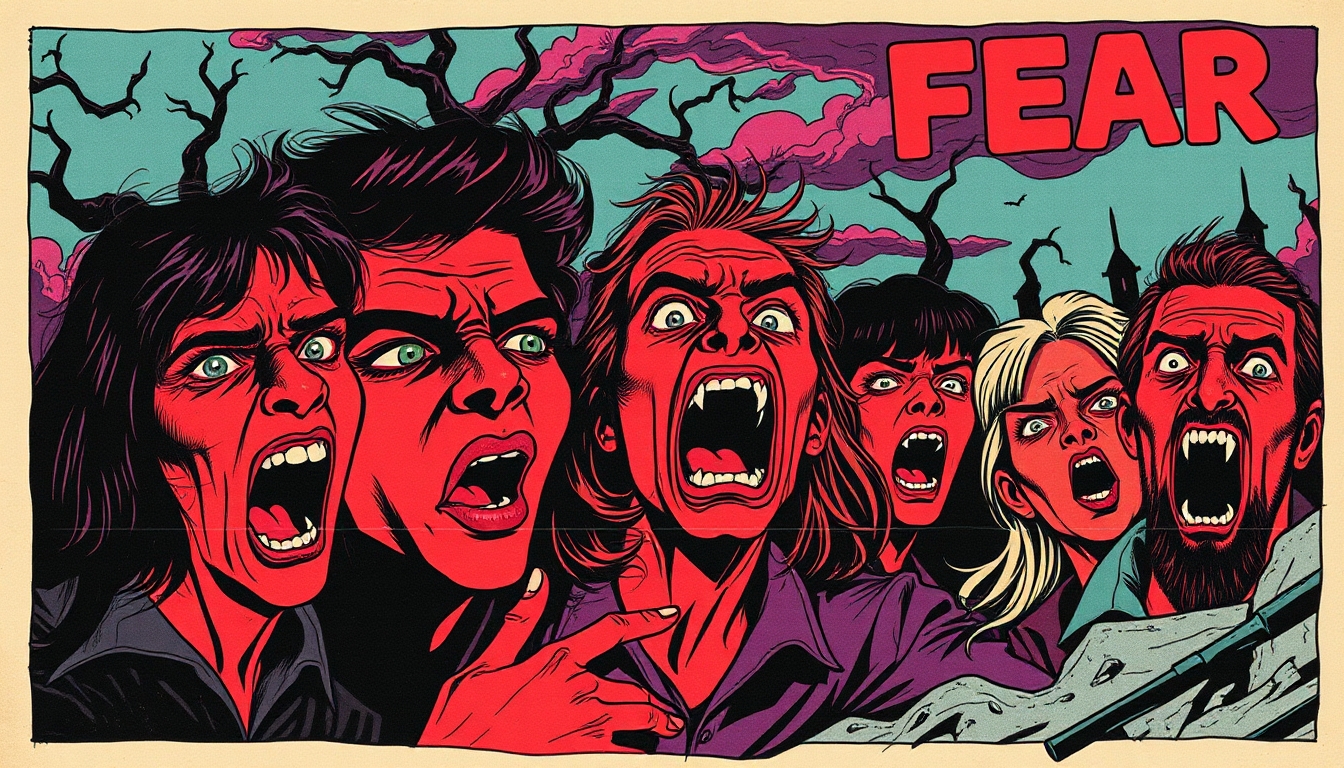Fear. That gnarly, stomach-churning parasite latching onto your brain, making you question everything—your choices, your worth, even your reality. But let’s be clear: fear isn’t just a random personal quirk. It’s a precision-engineered tool, deployed by those in charge to keep you right where they want you. It’s a leash they yank whenever the herd strays too far from the pen.
Think back—what were you taught to fear as a kid? Maybe it was the monster under the bed, or later, “those people” from across some imaginary line. Maybe it became the fear of God’s wrath or the judgment of your so-called friends online. The specifics don’t matter; what matters is that fear’s been baked into you from day one. And spoiler: That fear isn’t yours. It’s inherited, passed down like the world’s worst family heirloom to keep you obedient.
The Myth of American Freedom (Spoiler: It’s Fear-Driven)
The U.S. loves to crow about being the “land of the free,” but let’s call a spade a spade—it’s the land of anxiety attacks. We’re drowning in FOMO (Fear of Missing Out), terrified of crime, obsessed with terrorism, and shaking at the thought of anything remotely socialist. These aren’t random neuroses. This fear cocktail has been stirred up by politicians, media moguls, and corporations—because scared people? They’re easier to control. Fear makes you beg for security, and security? That’s just another word for surrender.
Meanwhile, hop across the pond to Europe, and you’ll find a different flavor of fear brewing. There, the anxiety isn’t about standing out—it’s about fitting in. If America’s motto is “be exceptional or die trying,” Europe’s is more like “don’t be that one jerk disrupting the harmony.” Both are cages; they’re just painted different colors.
Individualist vs. Collectivist Fear: Choose Your Poison
Cultural psychology shows us that fear isn’t just universal; it’s tailored to fit the narrative of your particular society. In East Asia, where harmony and family reputation are the sacred cows, the biggest fear is screwing it all up and shaming your people. Rock the boat, and you’re the reason your aunt won’t be able to show her face at Mahjong night.
Now, in the West, it’s all about standing out—except we’re paralyzed by the idea of not being good enough. Not climbing high enough, not achieving enough, not being seen enough. It’s like life is one giant episode of a talent show, and if you don’t wow the judges, you’re toast. This fear of personal inadequacy is practically a religion in its own right—praise be to Hustle Culture, amen.
Look at Japan’s taijin kyofusho—a unique social anxiety about offending others. That’s fear handcrafted to fit a society that runs on group cohesion. On the flip side, Western cultures dish out another anxiety special: the fear of failure. Here, if you’re not chasing some Instagrammable version of success, you’re basically dead on arrival.
Fear: It’s Not Just About What We Fear—It’s How We Fear
Different cultures teach us not only what to fear, but how to express it—or, in some cases, how not to. In the U.S., you’re encouraged to confront fear head-on. Therapy, journaling, mindfulness apps—hell, shout it from the rooftops if it makes you feel better. Express your emotions like a champion, and maybe, just maybe, you’ll get a participation trophy for “emotional bravery.”
In more collectivist societies, though, emotional restraint is the name of the game. No one wants you airing your fear-laundry in public. That’s selfish. Fear in those places is more like a secret you keep tucked away, managing it quietly so the whole group doesn’t get thrown off balance. It’s not repression—it’s choreography.
Who Planted These Fears, and Why Are We Watering Them?
Here’s the kicker: Belief systems love to fertilize fear. Spiritual cultures wrap it up in curses, spirits, and divine punishment. Achievement-obsessed societies? They throw failure and rejection at you like a never-ending dodgeball game. Every culture feeds fear based on what it values—and what it sees as a threat.
And just when you thought it couldn’t get worse—bam—here comes globalization and social media, introducing fears that didn’t even exist a decade ago. Take FOMO (fear of missing out): This is a new anxiety born from scrolling through the filtered highlights of everyone else’s life, convincing yourself that you’re perpetually missing something. It’s fear, 21st-century style—always on, always connected, always gnawing at you.
Coping with Fear: Community or Self-Reliance? Pick Your Weapon.
The way you deal with fear depends on where you’re from. Collectivist cultures lean on their people—family, friends, the whole support system. They know that fear loses its teeth when it’s shared.
Meanwhile, in individualist societies, you’re told to “handle it yourself.” Therapy, self-help books, or the occasional pharmaceutical cocktail—whatever it takes, just don’t expect anyone else to do the heavy lifting. Western mental health care loves to slap a diagnosis on fear, turn it into a condition, and sell you a treatment plan. Other cultures? They might see fear as a spiritual challenge to overcome or a social responsibility to balance.
Cut the Strings Before You Choke
Let’s not sugarcoat this: Fear is a tool. The media, corporations, politicians—they know exactly how to use it to keep the wheels turning in their favor. Fear makes you compliant. Fear makes you quiet. And fear keeps you from questioning the rules you’ve been following your whole damn life.
But once you start seeing the strings? That’s when the magic happens. The next time fear grips your brain, step back and ask: Is this really my fear, or did someone hand it to me? Spoiler: They handed it to you. And the first step toward freedom is recognizing that fact.
Once you know where the strings are, you can start cutting them. Snip by snip. Fear only works if you let it. And if you stop playing along, the whole system starts to fall apart. That’s when the real change begins—when you decide that fear doesn’t get to call the shots anymore.
Fear will always exist, but living under its thumb? That’s optional. Pick up the scissors. It’s time to make a few cuts.
Owner of BaedonWebZine and the mastermind behind its content. A versatile individual hailing from The Great American Desert, Henry carries the enduring influences of his upbringing. He wears multiple hats as a writer, graphics manipulator, devoted father, and dedicated geek. His days are spent exploring the world with a relentless quest for understanding, bringing a unique blend of insight and creativity to the site.




Leave a Reply